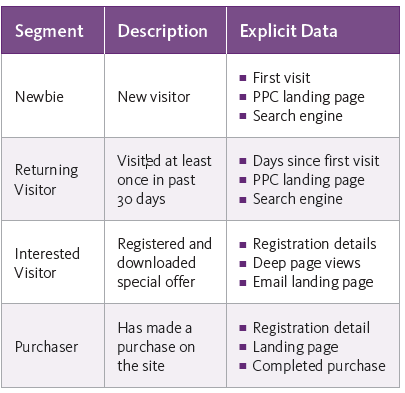Creating personalized customer journeys for your most important user segments – Sitecore Offshore Development
Sitecore offshore Development journeys, A contextual customer experience starts with an approach anchored in targeting customer segments and guiding them through relevant customer journeys. What distinguishes the pacesetters is their ability to prioritize which customer segments are the strategic drivers of the business; craft experiences tailored for these segments; and align content to the decision stages in their priority segments’ journeys. With the following methodology, any organization can achieve pacesetter advantage.
It starts with identifying your most important customer types
All customers are not the same. Customers classify into groups. Some groups are more important to your business than others. The question is how to accurately select, segment, and prioritize these customer groups.
A segment is a group of visitors who share similar characteristics and have been determined to benefit from the same experience. Segments can be defined by, for example:
Audience types
- Stage in journey
- Product/Service categories
- Industries
- Personas
In Sitecore Development, you can use explicit data to target specific content to specific groups of visitors, providing a more relevant, personalized, and contextual experience.
Examples of visitor segments using explicit identifiers:

To prioritize customer segments and focus initial personalization efforts on your most valuable visitors, use the PIE criteria. PIE stands for Potential, Importance, and Ease.
Potential is both the potential to increase visitor engagement by personalizing the experience, and the potential ROI of doing so
- Importance is the number of contacts in the segment
- Ease is how easily you can identify a visitor as belonging to a certain segment
We recommend that you start with segments that have the most potential (business value) and importance (size); then you can move on to focus on those that have lower importance but high potential (business value).
Mapping your customers’ journeys – Sitecore offshore development
A customer journey is the complete series of experiences that customers go through during their lifecycle and includes all of their interactions with your brand and organization. Today, customers are in control and progress through their engagement with your brand on their own terms; however, there are similarities in how segments engage through their journey.
It’s important to understand each stage of the customer journey so you can evaluate whether you engage them in the right channel for that stage, with the right message and content.
Here’s an example of a customer journey:
Customer journey image – Sitecore offshore development
How should you map your customer segments’ journeys? Create a cross-organizational team of people representing the touchpoints between your customers and your brand. Run an exercise where the team uses sticky notes to map and detail the following for each identified segment:
- Steps in the customer journey
- Definitions of each step in the journey
- Customer touchpoints for each stage
- Key customer activities in each step
Then, use these insights to create a table that details the following for each step in the customer segment journey:
- Stage
- Description of the stage
- Touchpoints/channels of engagement
- Customer activities/actions in that stage
Here’s an example:
With this clear understanding of your visitors, you are ready to create a Digital Relevancy Map for each of your segments.
Create a Digital Relevancy Map for each segment – Sitecore offshore development
A Digital Relevancy Map (DRM) is a planning framework that captures the content and functionality that’s optimal for your major segments at each stage in their journey. A DRM helps ensure you have the right content in the right channels to engage and nurture prospects or customers toward your business objectives (e.g., becoming a customer or advocate). A DRM provides a focused content guide for leveraging Sitecore’s rules-based and machine learning predictive personalization.
A basic DRM has the following format:
Evaluating, matching, and mapping your content to your DRMs
Having defined Digital Relevancy Maps as a roadmap to guide the creation of a contextual customer experience, you can now evaluate your existing content, understanding concretely if or how each asset or call to action aligns with your defined journey stages and visitor intentions. This exercise enables you to quickly spot areas requiring new targeted content, or content you no longer need to produce or maintain.
An effective way to to do this is to create a “Content” spreadsheet for each DRM. Create a row for each of your existing content assets. Create a column for each of the journey stages of your DRM. Refer to the goals/CTAs you defined in your DRM and refer to the content needs you outlined. For each of your current content assets, evaluate whether or not they apply or align with any of the journey stages or content needs. This will help you better use current content and understand which content assets are not relevant to your priority segments.
Putting it all together – Sitecore offshore development
With a clear understanding of how your priority segments are, the stages of their journey, their intentions, appropriate calls to action, and a mapping of relevant content, you are ready to better leverage the Sitecore Development Experience Platform to deliver highly personalized and relevant experiences, with clear measures of performance and business impact, to both prospects and customers.
SkyBridge Infotech is a certified Offshore Sitecore development agency, who also specialize in Sitecore CMS, Sitecore Commerce, & Sitecore consultancy. We build Ecommerce websites and mobile apps.
Source by Sitecore Development



